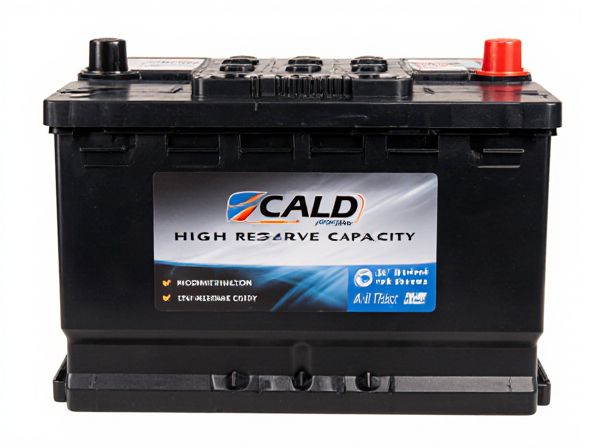
Photo illustration: High Reserve Capacity vs Low Reserve Capacity
High reserve capacity enhances your device's ability to handle peak loads and maintain performance during demanding tasks, reducing the risk of system slowdowns. Low reserve capacity limits available resources, causing potential bottlenecks and decreased efficiency under heavy usage. Optimizing reserve capacity ensures smoother operation and better long-term reliability.
Table of Comparison
| Feature | High Reserve Capacity | Low Reserve Capacity |
|---|---|---|
| Definition | Battery's ability to provide power during engine off | Limited power supply when engine is off |
| Typical Reserve Capacity (minutes) | 100+ minutes | 30-50 minutes |
| Performance in Power Outage | Longer power sustainment | Shorter backup duration |
| Ideal Use | Vehicles with high electrical demand, accessories | Standard vehicles with low accessory use |
| Battery Life | Enhanced due to better discharge tolerance | Shorter due to frequent deep discharge |
| Cost | Higher price range | Lower price range |
| Summary | Offers reliable power backup and longer lifespan | Suitable for basic power needs and budget-friendly |
Understanding Reserve Capacity: Definition and Importance
Reserve Capacity refers to the amount of extra energy a battery can provide beyond its nominal capacity, measured in minutes at a specific discharge rate, indicating how long a battery can sustain a load if the alternator fails. High Reserve Capacity batteries ensure longer power availability during emergencies, supporting critical systems and improving vehicle reliability, especially in demanding conditions. Low Reserve Capacity batteries have shorter backup durations, making them less suitable for heavy electrical loads or prolonged power outages.
Key Differences Between High and Low Reserve Capacity
High Reserve Capacity refers to the ability of a system, battery, or device to store and supply a large amount of energy over an extended period, resulting in longer operational life and better performance under heavy or sustained loads. Low Reserve Capacity indicates limited energy storage, leading to shorter run times, more frequent recharges or replacements, and reduced efficiency during high-demand conditions. Key differences include energy storage size, duration of power supply, and suitability for high-drain applications versus basic or intermittent usage scenarios.
Impact of Reserve Capacity on Performance
High reserve capacity in devices ensures sustained performance during peak loads by providing additional energy beyond the baseline requirements, leading to improved reliability and reduced risk of power outages. Low reserve capacity can cause performance degradation, system instability, or failure under stress due to insufficient energy reserves. Efficient management of reserve capacity is critical for maintaining optimal functionality in high-demand environments such as data centers and industrial machinery.
Factors Influencing Reserve Capacity
Reserve capacity is influenced by factors such as mitochondrial efficiency, cellular energy demand, and oxidative stress levels. Higher mitochondrial efficiency enhances ATP production, increasing reserve capacity, while elevated oxidative stress damages mitochondria and lowers it. Cellular energy demand fluctuations also play a critical role, where cells with high energy needs tend to develop higher reserve capacities to sustain function during stress.
High Reserve Capacity: Benefits and Drawbacks
High reserve capacity in batteries enhances device longevity by providing extended usage between charges, reducing the frequency of replacements and maintenance. This capacity supports high-drain applications, ensuring stable performance under demanding conditions, which is essential for smartphones, electric vehicles, and backup power systems. However, high reserve capacity batteries often have increased size and weight, potentially limiting portability and increasing production costs.
Low Reserve Capacity: Risks and Limitations
Low reserve capacity in batteries significantly increases the risk of unexpected power loss during critical operations, leading to device shutdowns and data loss. It limits the battery's ability to provide sustained energy under heavy load or prolonged use, reducing overall device reliability and lifespan. Devices with low reserve capacity often face quicker degradation, heightened vulnerability to voltage drops, and increased chances of performance failure in high-demand scenarios.
Applications Requiring High Reserve Capacity
Applications requiring high reserve capacity, such as emergency lighting, backup power systems, and medical equipment, demand batteries that can deliver sustained energy over extended periods. High reserve capacity batteries ensure reliable power supply during outages or unexpected high-load conditions, preventing operational disruptions. Selecting batteries with elevated reserve capacity enhances performance stability and safety in critical environments.
Industries Affected by Low Reserve Capacity
Low Reserve Capacity significantly impacts industries like manufacturing, healthcare, and energy, where continuous operation is critical and downtime leads to substantial financial losses. In manufacturing, insufficient reserve capacity can cause production delays and supply chain disruptions, while healthcare facilities face challenges in managing patient influx and emergency cases. The energy sector experiences heightened risks of blackouts and instability due to limited backup power resources, affecting both grid reliability and economic stability.
Optimizing Systems for Ideal Reserve Capacity
High reserve capacity in systems provides greater flexibility and robustness, ensuring optimal performance under peak loads and unexpected demands. Low reserve capacity can lead to system strain, reduced efficiency, and increased risk of failure during high usage periods. Optimizing systems for ideal reserve capacity involves balancing resource allocation to maintain reliability without excess overhead, enhancing sustainability and cost-effectiveness.
Future Trends in Reserve Capacity Management
Future trends in high reserve capacity management emphasize integrating advanced AI algorithms and real-time data analytics to predict demand fluctuations and optimize resource allocation dynamically. Low reserve capacity strategies are evolving to incorporate predictive maintenance and IoT-enabled sensors, minimizing downtime while maintaining lean operations. Emerging technologies such as blockchain and edge computing are poised to enhance transparency and responsiveness in reserve capacity management systems, supporting more resilient and adaptive infrastructures.
 caratoz.com
caratoz.com